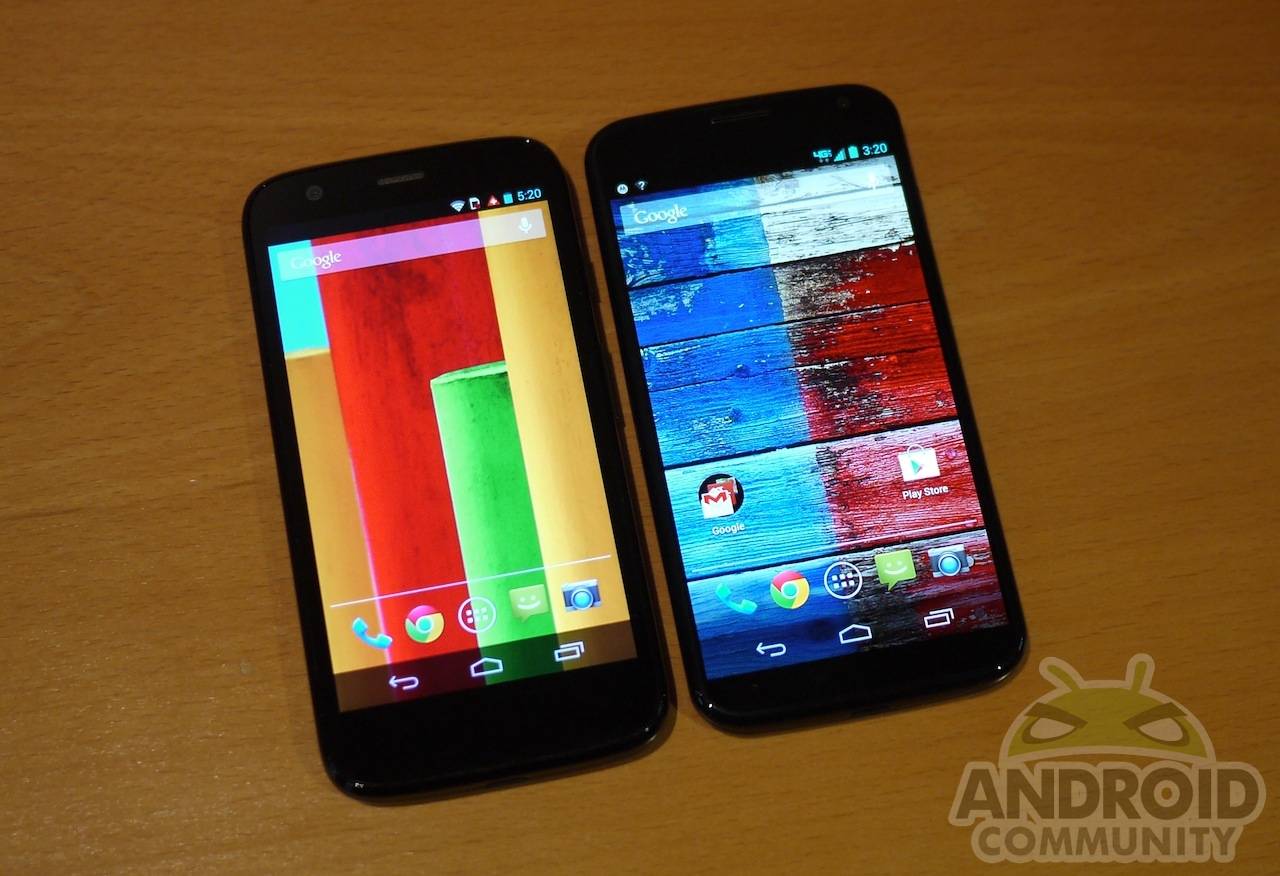
Today we’ve been introduced to Motorola’s national and international strategy for taking command of the growing mid-tier smartphone market with the smartphone called Moto G. This device is set to be priced at a cool $179 USD off-contract in the United States and comparable costs outside the states, making it a rather enticing proposal for prospective smartphone users both inside the USA and internationally. What we’re doing today is having a peek at this machine as it prepares to launch in Brazil, then Europe, and eventually (by January) inside the USA as well.
Software
What you’ve got with this smartphone is a setup not unlike that of the Moto X. Just like the Moto X you’ve got a handset that’s roughly the side of an average adult palm at 65.9mm wide. Just like the Moto X you’ve got near-pure Android inside barring a few minor additions from the manufacturer like Motorola Migrate to make transferring data and settings from your old phone to the new as simple as possible (and it really, really is). Just like the Moto X, you’ve got a device that Motorola intends on carrying in the public as a headliner – a hero phone they wont likely forget about supporting any time soon.

One example is the version of Android the Moto G has and will be upgraded to sooner than later. Right out of the box, the Moto G works with Android 4.3 Jelly Bean. Motorola has promised that this device will indeed be updated to Android 4.4 KitKat “at the beginning” of the year 2014. As the Moto X is currently set for “a few weeks” until KitKat, we’ve got high hopes for the Moto G in this regard.
Support – and we’ll say this more than once throughout the life of this device – is something we’ll expect implicitly. Motorola is taking a stance here that suggests they’ll be behind the software updates – at least – of this device as if it were their own child. We’re going to hold them to that, even if they don’t say it in those exact words.
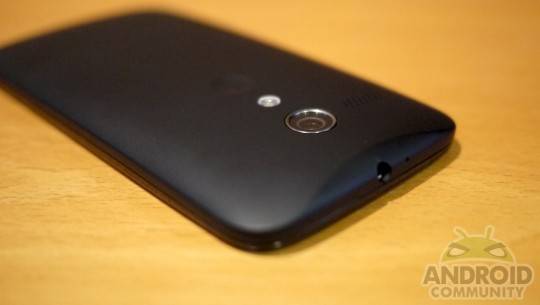
With that, you’ve got a rather tame device by today’s headliner standards – this is no HTC One or Samsung Galaxy S4, devices that undeniably aimed to be seen as Best in Class. Instead you’ve got a smartphone that does all the basics – and then a bit more.
Hardware
By the major manufacturer smartphone release standards set in 2012, this device is a hero phone. By the major manufacturer smartphone release standards set in 2013, this device is certainly a contender for the top of the middle-tier. You’ll be working with a 5-megapixel camera, a quad-core Qualcomm Snapdragon 400 processor (less powerful than the processor in the Moto X, but still more powerful than that of the Samsung Galaxy S III, HTC One X (USA edition), or Motorola DROID RAZR HD.
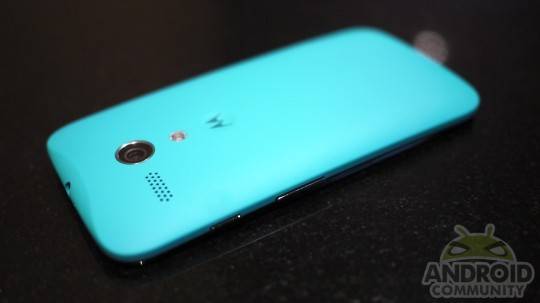
Of course actual power is only what you make of a device when you’ve got processors with power so similar as these, so we’ll have to leave it up to synthetic benchmarks to tell us the full tale when the time comes. The same goes for the camera. While we’ve got a 5-megapixel shooter on this smartphone here after we’ve been well on past a generation or two of top-end smartphones working with 8-megapixel shooters, it really comes down to the combination of lens quality and image processing abilities.
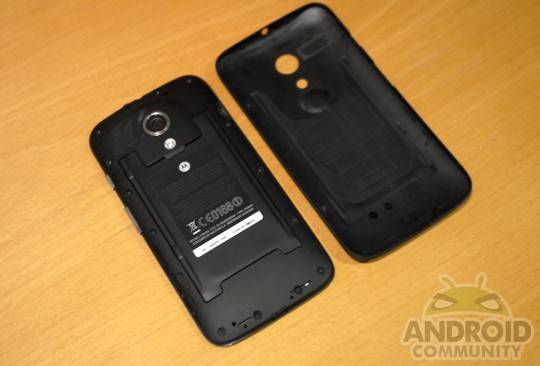
This was proven beyond a shadow of a doubt by the 4-megapixel (or 4-UltraPixel, if you prefer) HTC One earlier this year. The Moto X continues to show improvement in the quality of its 10-megapixel camera here in software updates just weeks after its initial release – we’re expecting better-than-general results from the setup on the Moto G.
What’s in the box?
Inside the box you’re going to get a USB cable with detachable wall-charger for data transfer to and from your computer and charging the device in a standard wall socket. You’ll also have a basic “Quick start guide” for those users that require that extra little push into the pool. Finally you’ll have the device itself.
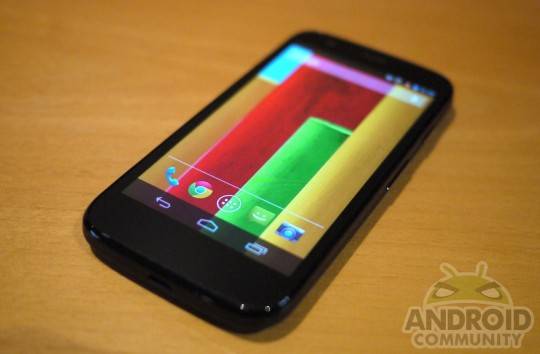
The Moto G comes in its box in black. Unlike the Moto X, you will not be customizing this smartphone before it arrives at your doorstep – instead you’ll be receiving the one and only iteration of the device (color-wise) with a black front and a black back. The backside of this machine is removable, on the other hand, allowing for a collection of backside casings called “Shells”.

These Shells are made of different materials and are available in a variety of colors – seven colors in all: white, black, red, yellow, turquoise, purple, and blue. The standard shell comes in all seven colors, while a “Grip” bumper-type shell comes in blue, yellow, red, white, and black. The Flip Shell also comes in all seven colors, delivered in a slightly different set of materials while the tones remain the same throughout the Motorola-made collection.

Initial Comfort and Usability
The Moto G presents a surprisingly high-quality build and a display that’s every bit as responsive as the Moto X. While we expect to find more pointed differences between the Moto X vs the Moto G once we get down and dirty with a review of the G, for now it feels like Motorola has once again delivered an experience that’ll be solidly enjoyed by its users. Have a peek at our Moto X review for now and stay tuned – we’ll be diving much, much deeper into the Moto G before you know it.












































I have to say that even as a power user, this is looking like a nice option. Off contract price is Right and support looks to be there. Optimization looks to be as big of a key here as on the X. I might be a taker.
I like the direction Motorola is taking. Optomizing their device is simply the new standart and motorola takes the cake for beggining the trend on Android devices. You don’t need 4 cores if the software sitting atop of those 4 cores simply is stupid on managing them.
this phone would sell very well worldwide. Motorola, are you reading this, sell it globally in various GSM markets and you will make money…
I am Brazilian, where I buy the flip case for my MOTO G?